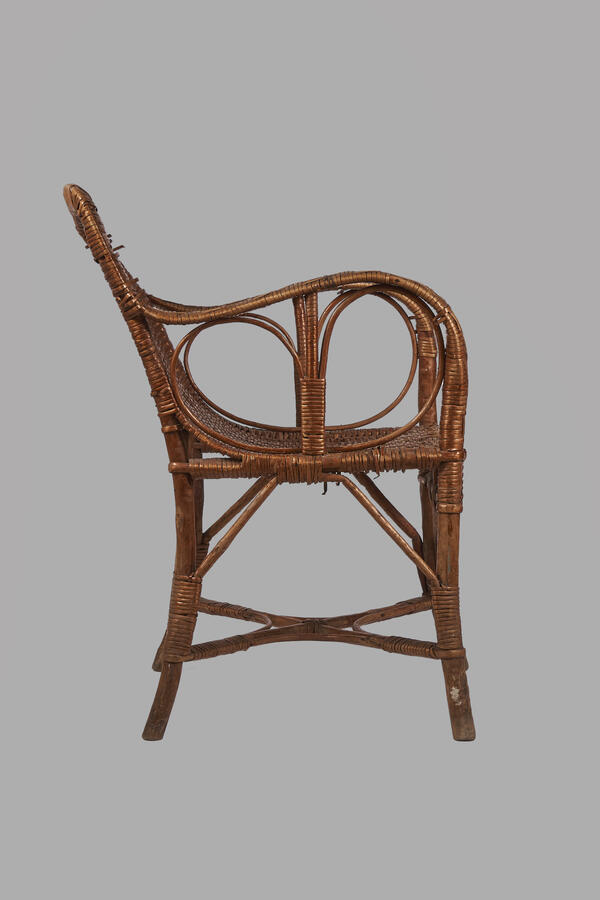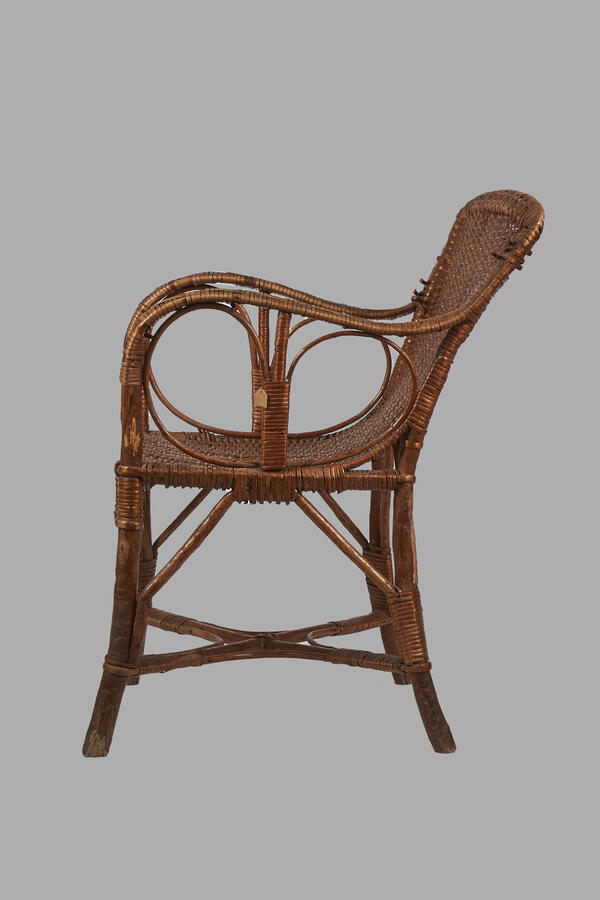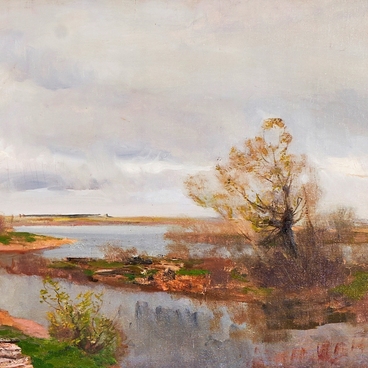Basket weaving was widespread in areas with many rivers, but it began to develop systematically only in the 1880s–1890s with the revived interest in folk crafts. Wicker furniture is easy to clean and able to withstand humidity, which makes it durable and allows to maintain an almost original look for many years.
The armchair from the museum’s collection used to belong to the family of the architect Danini.
Valentin Silvievich Danini was born in Tsarskoe Selo on April 17, 1900. His father Silvio Danini was an architect; for more than 20 years, he built, restored, and designed palaces, schools, and hospitals, and was engaged in arranging the apartments of Nicholas II and his wife Alexandra Feodorovna. In Soviet times, he continued to work as an architect. Valentin Danini graduated from the Tsarskoye Selo real school in 1917 and entered the Institute of Civil Engineers. In 1918, he was drafted into the Red Army. In 1924, he transferred to the Leningrad Institute of Architecture.
In November 1943, Valentin Danini arrived in Novorossiysk. He drew up a project to restore the city destroyed by the war. From 1944 to 1954, Danini worked as the chief architect of Novorossiysk. He designed the Pobeda summer cinema, the building of the degaussing range on the Admiral Serebryakov embankment, residential buildings on Pobeda Street, Novorossiysk Republic Street and others. He also participated in the planning of the park named after Lenin, the Heroes Square, and the Park Highway. From 1954 to 1973, he taught architecture, industrial and civil engineering at various educational institutions in Novorossiysk.
His wife Anna Sergeevna Danini organized a children’s music school and worked as its first director. In 2007, School No. 1 was named after her.
Years later, the architect’s niece donated several pieces of furniture from the Danini family, including this wicker chair, to the museum. The arms of the chair are rounded, the legs are slightly curved and reinforced with an X-shaped support. The frame is made of birch, the chair — of willow. The color is yellowish brown.
The armchair from the museum’s collection used to belong to the family of the architect Danini.
Valentin Silvievich Danini was born in Tsarskoe Selo on April 17, 1900. His father Silvio Danini was an architect; for more than 20 years, he built, restored, and designed palaces, schools, and hospitals, and was engaged in arranging the apartments of Nicholas II and his wife Alexandra Feodorovna. In Soviet times, he continued to work as an architect. Valentin Danini graduated from the Tsarskoye Selo real school in 1917 and entered the Institute of Civil Engineers. In 1918, he was drafted into the Red Army. In 1924, he transferred to the Leningrad Institute of Architecture.
In November 1943, Valentin Danini arrived in Novorossiysk. He drew up a project to restore the city destroyed by the war. From 1944 to 1954, Danini worked as the chief architect of Novorossiysk. He designed the Pobeda summer cinema, the building of the degaussing range on the Admiral Serebryakov embankment, residential buildings on Pobeda Street, Novorossiysk Republic Street and others. He also participated in the planning of the park named after Lenin, the Heroes Square, and the Park Highway. From 1954 to 1973, he taught architecture, industrial and civil engineering at various educational institutions in Novorossiysk.
His wife Anna Sergeevna Danini organized a children’s music school and worked as its first director. In 2007, School No. 1 was named after her.
Years later, the architect’s niece donated several pieces of furniture from the Danini family, including this wicker chair, to the museum. The arms of the chair are rounded, the legs are slightly curved and reinforced with an X-shaped support. The frame is made of birch, the chair — of willow. The color is yellowish brown.





